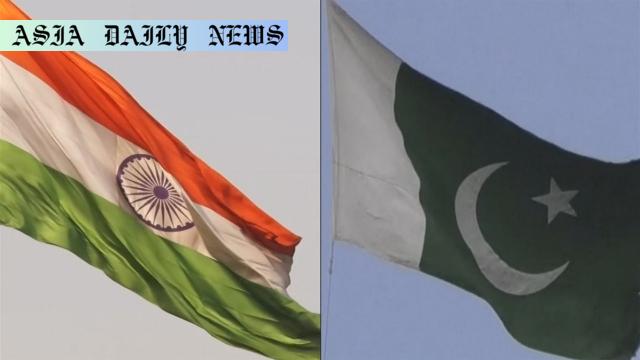Ceasefire: Tensions between India and Pakistan remain high, with experts calling for international support to prevent bloodshed.

The Historical Context of India-Pakistan Tensions
The recent clash between India and Pakistan in the volatile region of Kashmir marks another episode in their long and tumultuous history. The root cause of their discord lies in the partition of British India in 1947, which created India and Pakistan as separate nations. Ever since, Kashmir—a Himalayan region claimed by both countries—has remained at the center of their disputes. Numerous wars, skirmishes, and ceasefires have transpired, reflecting persistent distrust and hostility. Despite agreements aiming to limit violence, such as the Indus Waters Treaty, violations and escalations continue to disrupt peace.
On April 22, a group of tourists fell victim to a deadly attack in Kashmir, resulting in 26 fatalities, further inflaming tensions. This incident triggered a series of retaliatory strikes by both nations involving missiles and drones, leaving over 50 civilians dead and significant damage to military infrastructure. Although a ceasefire agreement was announced on May 10, India’s assertion that it remains ‘temporary’ underscores the fragility of the truce.
The Fallout of Indus Treaty Suspension
Adding to the complexities, India suspended the Indus River water-sharing treaty in retaliation for the violence. Established in 1960 under the auspices of the World Bank, this treaty is a cornerstone for managing water resources shared by both countries. The suspension has alarmed Pakistan, which sees it as a significant threat, potentially escalating tensions further. Water scarcity in a region already facing environmental challenges can have serious implications for agriculture, economies, and millions of lives dependent on the river’s ecosystems.
Pakistan views any disruption to the Indus River’s flow as an ‘act of war,’ heightening diplomatic and militaristic apprehensions. Beyond the tangible effects on water resources, this step signals a deterioration in trust and communication, a critical blow to peacebuilding endeavors.
The Role of International Mediation
Experts like Christopher Clary emphasize that resolving mutual distrust requires robust international mediation. The global community, particularly organizations like the United Nations and geopolitical stakeholders, must actively engage to de-escalate the situation. Economic sanctions, diplomatic dialogue, or intergovernmental summits could provide platforms for peaceful negotiations.
However, external interventions are often fraught with their own challenges. Sovereignty concerns, differing political agendas, and historical grievances complicate reaching consensus. Nonetheless, international support must focus on fostering long-term solutions, addressing core issues such as border violations, terrorism, and resource sharing.
The Human Cost of the Conflict
Beyond geopolitics lies the devastating human toll of the conflict. Civilian lives are often collateral in these clashes, with communities facing displacement, trauma, and loss. The ongoing tension also stifles economic and social development in the region, robbing individuals of opportunities and stability. Societies within these nations bear the burden of military expenditures and strained diplomatic relations, which could otherwise be directed toward education, healthcare, and infrastructure improvements.
Humanitarian organizations must prioritize addressing the immediate and long-term needs of affected populations. Relief efforts, mental health support, and community rebuilding initiatives are critical to restoring dignity and hope for these vulnerable groups.
Path Forward: Finding an Enduring Solution
While the recent ceasefire offers a glimmer of hope, its impermanence calls for sustained efforts to forge a lasting resolution. Both nations must prioritize dialogue over aggression and seek mutually beneficial partnerships rather than adversarial strategies. Confidence-building measures like economic cooperation, cultural exchanges, and bilateral trade agreements can ease tensions and build bridges of understanding.
Ultimately, peace in South Asia demands willingness from both India and Pakistan to transcend historical grievances and prioritize the well-being of their citizens. The global community’s involvement, coupled with grassroots efforts for reconciliation, could pave the way toward a future free from hostility.
Commentary
Understanding the Fragility of Peace
The delicate ceasefire between India and Pakistan serves as a potent reminder of how fragile peace can be in regions marred by historical and territorial disputes. The Kashmir conflict reflects the intertwined complexities of nationalism, religion, and geopolitics, making any resolution a daunting task. The emotional weight intertwined with the borders of Kashmir only exacerbates the challenges, as citizens and leaders alike grapple with legacy and loss.
The Global Community’s Role in De-escalation
International intervention has the potential to serve as a much-needed de-escalator in this volatile situation. However, achieving meaningful and impartial action requires diplomacy of the highest caliber. The world has witnessed similar conflicts spiraling out of control due to a lack of prompt or coordinated global responses. Ensuring South Asian stability should be a pressing priority for neighboring countries and global powers alike.
Hope in Face of Adversity
Ultimately, the resilience of the people caught amidst these clashes deserves recognition. Despite enduring decades of hostility, communities in both India and Pakistan strive for livelihood and stability. It is high time for leaders to reflect and aim for solutions that prioritize humanity over hostility. By addressing fundamental issues like terrorism, economic underdevelopment, and environmental challenges, these nations can move closer to lasting peace.


